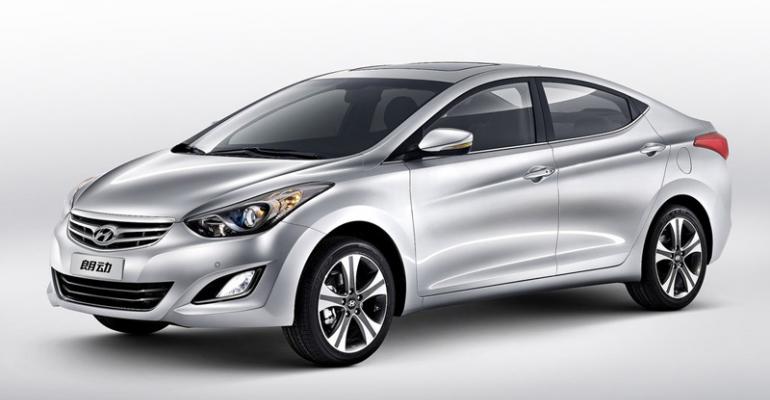Beijing Hyundai has its third plant in pilot production and is ramping to full-scale production of the Langdong, a slightly larger and modified China-exclusive version of the popular Elantra sedan that is built in other markets, including the U.S.
The Langdong is offered with 1.6L and 1.8L multiport-fuel-injection engines that produce 127 hp and 146 hp respectively, with 6-speed manual and automatic transmission choices.
A load of options are available, including GPS navigation, fully automatic air conditioning, adjustable heated power seats and the auto maker’s Blue Link infotainment system.
The all-new plant also is producing the new Santa Fe SUV first shown at the 2012 New York auto show. Hyundai believes the model will be a big seller in China.
The facility recently received an unplanned shakedown in its paint operations when it took over full- scale painting requirements for body components usually coated in the auto maker’s No.1 plant, which was shut down by a fire.
The new No.3 factory coated the components that were shipped body-in-white from the No.1 plant, then painted and returned them for completion of production.
This ad hoc process continued for 17 days, from May 8 until May 26, when the No.1 plant was able to return to normal operations, building more than 1,200 vehicles daily.
Beijing Hyundai's new facility is desperately needed to meet sales demands that are outstripping the other two plants’ maximum production capacity. Whereas their combined maximum capacity is 600,000 units, the JV is on track to hit its target of 800,000 vehicle sales this year.
In 2011, Beijing Hyundai taxed both of its plants well beyond their designed capacity, achieving sales of 758,000 vehicles.
With ultimate throughput of 400,000 units annually, the new facility boosts the JV’s total capacity from 600,000 to 900,000 this year, and to 1 million when the plant reaches maximum capacity by the end of 2014.
Beijing Hyundai President Hyo Heum Baek said during the Beijing auto show in April that the auto maker expects to sell 800,000 vehicles this year in China, maintaining its current 6.2% market share.
Beijing Hyundai launched production at its first plant in December 2002. Despite a potential capacity for 300,000 units, the JV recorded only 52,129 deliveries in its first full year of 2003.
When the auto maker broke ground for a second plant in April 2006, the original plant had been modified to achieve full capacity of 300,000 units and was being fully utilized.
The second plant, including a vehicle design center and research and development facilities, opened in April 2008 with initial annual capacity of 200,000 units but soon was expanded to build 300,000.
The former president of Beijing Hyundai said in 2010 that in addition to the third plant then under construction, a fourth facility would be needed before 2015. Spokesmen confirmed at the time that a fourth plant was under study, but Baek said in April it was not currently needed.
The first two plants are located within 1.2 miles (2 km) of each other. The new plant is located about 12 miles (20 km) from the others. All are within Bejing's Shunyi industrial district.





